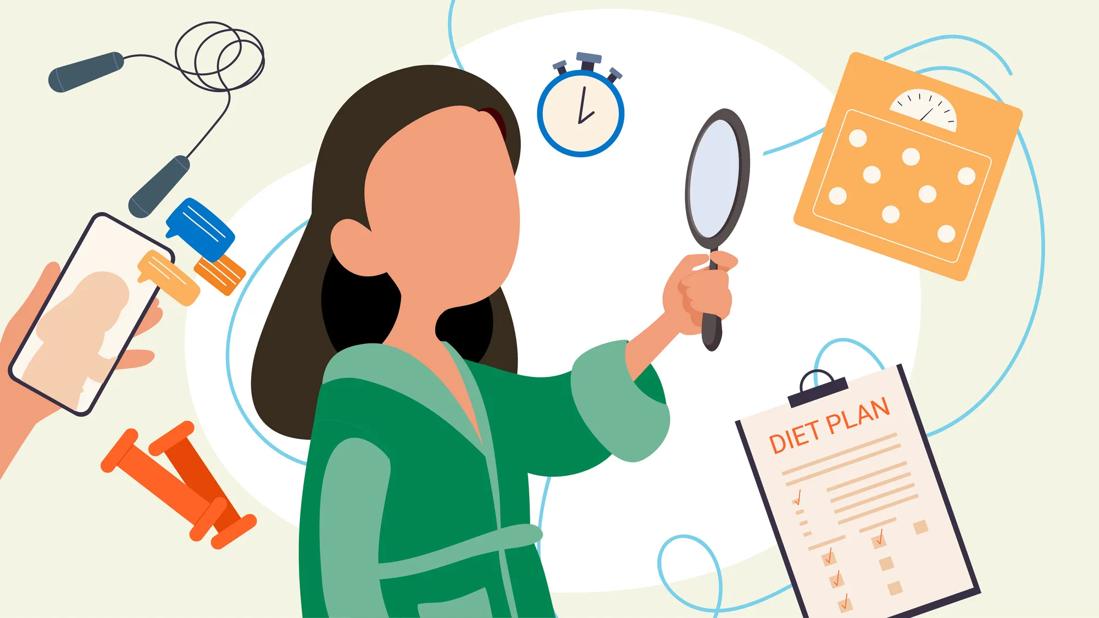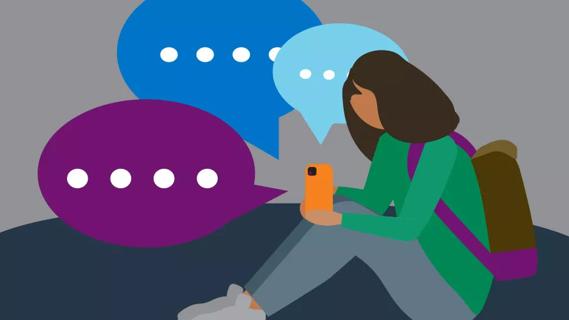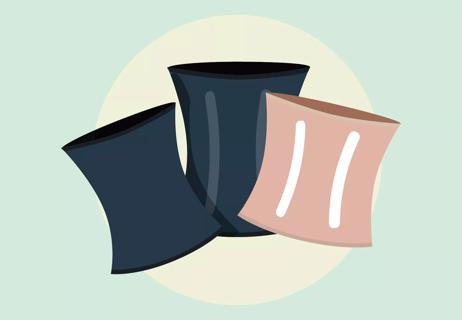Obsessively assessing your appearance? Cognitive behavioral therapy and journaling can help you figure out why you’re doing it — and how to stop

Admit it: You steal a glance at yourself as you walk past that building with the reflective glass windows. You pull on the waistband of your jeans, just to see how much “room” you’ve got to work with. And when you come home from the gym, you spend a couple minutes at the mirror looking for evidence of your hard work. It’s nothing to be ashamed of. It’s called body checking. And we all do it.
Advertisement
Cleveland Clinic is a non-profit academic medical center. Advertising on our site helps support our mission. We do not endorse non-Cleveland Clinic products or services. Policy
But — like so many other activities — body checking can become compulsive. When it does, it’s usually a sign that your mental health needs attention.
Psychologist Susan Albers, PsyD, explains what body checking looks like, how to tell when it’s becoming a problem and what to do about it.
“Body checking is exactly what it sounds like. It’s the act of checking in with your body around weight, shape, size and appearance to see if it’s changed,” Dr. Albers says. The behavior exists on a continuum. We all engage in some form of body checking every day, consciously and unconsciously. It’s part of being human. But this behavior can also become compulsive. And when it does, it’s associated with mental health conditions like body dysmorphic disorder (BDD) and eating disorders.
Body checking can take many different forms. And sometimes, it can be hard to tell, if your body checking behavior is just a habit or something more serious.
“Sometimes, people intentionally go to the mirror to evaluate their appearance,” Dr. Albers notes. “And sometimes, it’s a compulsive habit that happens without someone’s awareness.”
One way to tell the difference is to ask yourself why you’re doing it.
“When you body check in a compulsive way, there’s a purpose to it,” she continues. “You’re assessing your body not just to see how you look, but to measure it against some sort of standard.”
Advertisement
A few common body checking behaviors include:
Combing your hair, checking your teeth or touching up your makeup during a bathroom break is a safe and healthy activity.
But what if you’re spending hours looking at yourself in the mirror from every angle? Or you feel uncomfortable when there isn’t a mirror nearby? That’s a sign your body checking has developed a pathological quality.
There’s nothing wrong with taking (or posting) photos of yourself from time to time. In fact, the occasional selfie can boost both your mood and your self-esteem!
If you take a lot of selfies — or take selfies to assess parts of your body you’re unhappy with — Dr. Albers says that could be a sign you lack self-confidence or are engaging in excessive body checking.
Who doesn’t love a good movie makeover scene? You know, where the star tries on outfit after outfit until they find exactly the right look?
Being indecisive about what you wear is a form of body checking because you’re appraising your looks. But it’s not concerning.
Using clothing to judge your physique is a different story. Your behavior’s escalating to the level of a compulsion if you put on the same clothes to weigh yourself every day. Or if you try on your high school prom dress every week to make sure it still fits. Or if you wear baggy clothes to avoid seeing your body or being triggered by a waistband.
The amount we weigh isn’t supposed to be stable. It fluctuates from day to day — and sometimes, even hour to hour. The same goes for our measurements.
Occasionally checking for significant changes is a healthy behavior. But weighing or measuring yourself multiple times a day or before and after meals suggests an unhealthy fixation.
We all use our hands to assess our physique from time to time. Dr. Albers often sees people measure the diameter of their wrists with their fingers, for example.
Other techniques include:
It’s OK to interact with your body this way on occasion. But doing it frequently can be a sign that you’re obsessing about your looks.
Comparison may be a thief of joy, but it’s also an understandable impulse, especially in the era of social media. It only becomes a sign of compulsive body checking when it starts impacting your daily life.
If you can’t go out with your best friend because they make you feel ugly, Dr. Albers recommends getting counseling to help understand the emotional obstacles you’re encountering.
Advertisement
Who among us hasn’t looked at an old picture with a bit of nostalgia or — let’s be honest — jealousy? Aging is a natural process, but it isn’t always easy. And there’s nothing wrong with admiring that fabulous head of hair, those dancer’s legs or that wrinkle-free face you had in grade school.
This type of body checking is only a problem if it makes you feel unhappy in the body you have now or skews your expectations of yourself.
Body checking can sometimes be a healthy part of a mindfulness practice, Dr. Albers says.
Body scan meditation, for instance, is a grounding technique where you focus on your body. You're fixated on it not to judge it, but to bring you out of your head and into the moment. Not only is it a great way to relieve stress, but it may also reduce pain associated with chronic illness.
Like any other mindfulness practice, body scan meditation isn’t for everybody. If you have a history of mental illness, body image issues or compulsive behaviors, integrating body checking into your wellness routine could do more harm than good, as it may trigger an escalation of body checking behavior.
“Body checking and eating disorders often go hand in hand,” Dr. Albers states. And it’s not just a theoretical connection. A 2023 study found people living with anorexia nervosa were more likely to engage in dangerous weight loss behaviors (like skipping meals or self-induced vomiting) in the moments after body checking.
Advertisement
Dr. Albers notes that body image issues and BDD are also associated with body checking. Body dysmorphia distorts your perception of your physical appearance. As one study puts it, body checking makes your “strong preoccupation with and overvaluation of body shape and size” visible.
She also makes another connection between body checking and eating disorders: Social media can trigger it.
“Social media fosters a lot of comparison,” she explains. “And it can even incite the idea of body checking.”
This is especially true of content that falls into the “thinspo” genre. Thinspo is media content that promotes body image issues and unhealthy weight loss.
Body checking is its own genre of thinspo. You can watch videos of people body checking, teaching you how to body check, critiquing their physique or comparing it to somebody else’s. Before and after photos, workout videos and weight loss montages all involve body checking.
“It’s role modeling the behavior,” Dr. Albers continues. “Teens are still trying to figure out what normal, acceptable behavior looks like. Frequent contact with these videos — and these very curated images — can make body dissatisfaction seep into their subconscious.”
Advertisement
The connection between body checking, BDD and eating disorders is strong. But Dr. Albers says those aren’t the only conditions associated with compulsive body checking. Others include:
Like any other compulsive behavior, body checking isn’t an easy habit to break. But it can be done. Dr. Albers recommends:
It can be disturbing to see somebody you care about engaging in body checking. But it’s important to remember that not all body checking behavior is compulsive, harmful or even conscious. So, go into any conversation about the topic with an open mind.
“Sometimes, body checking is involuntary,” Dr. Albers reminds us. “I’ve had people talk with me about their body checking, and as they’re sitting there, they’re pinching themselves. They don’t even realize they’re doing it because it’s become so habitual.”
It can also happen for a good reason. A person living with panic disorder may check their pulse, for example, to help stay calm in anxious situations. And some autistic people use body checking charts to improve their interoception — to better interpret the messages their body’s sending them.
“If somebody you care about is body checking, bring it to their awareness in a very gentle and compassionate way,” she recommends. Don’t scold or lecture. Instead, ask questions that encourage your loved one to reflect.
Let’s say you notice that your friend traces their collarbone multiple times a day. The next time it happens, Dr. Albers suggests saying something like, “I noticed you ran your fingers over your collarbone just now. You seem to do that a lot. Why is that?”
If they’re open to continuing the conversation, she recommends pointing out — again, in a gentle and compassionate way — the impact their actions are having on their life.
Your first and most important job is to be a good listener. You can’t force people to get help, but you can provide a safe space to reflect on — and maybe, one day, change — their behavior.
Learn more about our editorial process.
Advertisement

Focusing on non-physical attributes, practicing body positivity or neutrality, and avoiding comparisons can help

This pattern of self-doubt leads you to worry that someone will discover you’re a fraud and that you don’t deserve the success you’ve earned

It’s a continual process, but through meaningful practices, you can find peace and positivity with yourself

Horoscopes, fortunetellers and personality tests all feed into our cognitive biases and reinforce our own feelings as true

Ignore the negative self-talk, practice positive affirmations and remember, you’re not perfect — and that’s OK!

Foster communication about social media, encourage whole-person attributes and be mindful of your own negative self-talk

Filters and editing can lead to low self-esteem, depression and even body dysmorphic disorder

Wearing this undergarment for too long will do more harm than good

Babies can get congested easily, but you can calm their cough by keeping them hydrated, using nasal drops and running a humidifier

Weight loss may cause loose, sagging skin and muscle loss to your rear

Several conditions, like vitiligo and fungal infection, can cause a loss of pigmentation, leading to white spots or patches on your skin